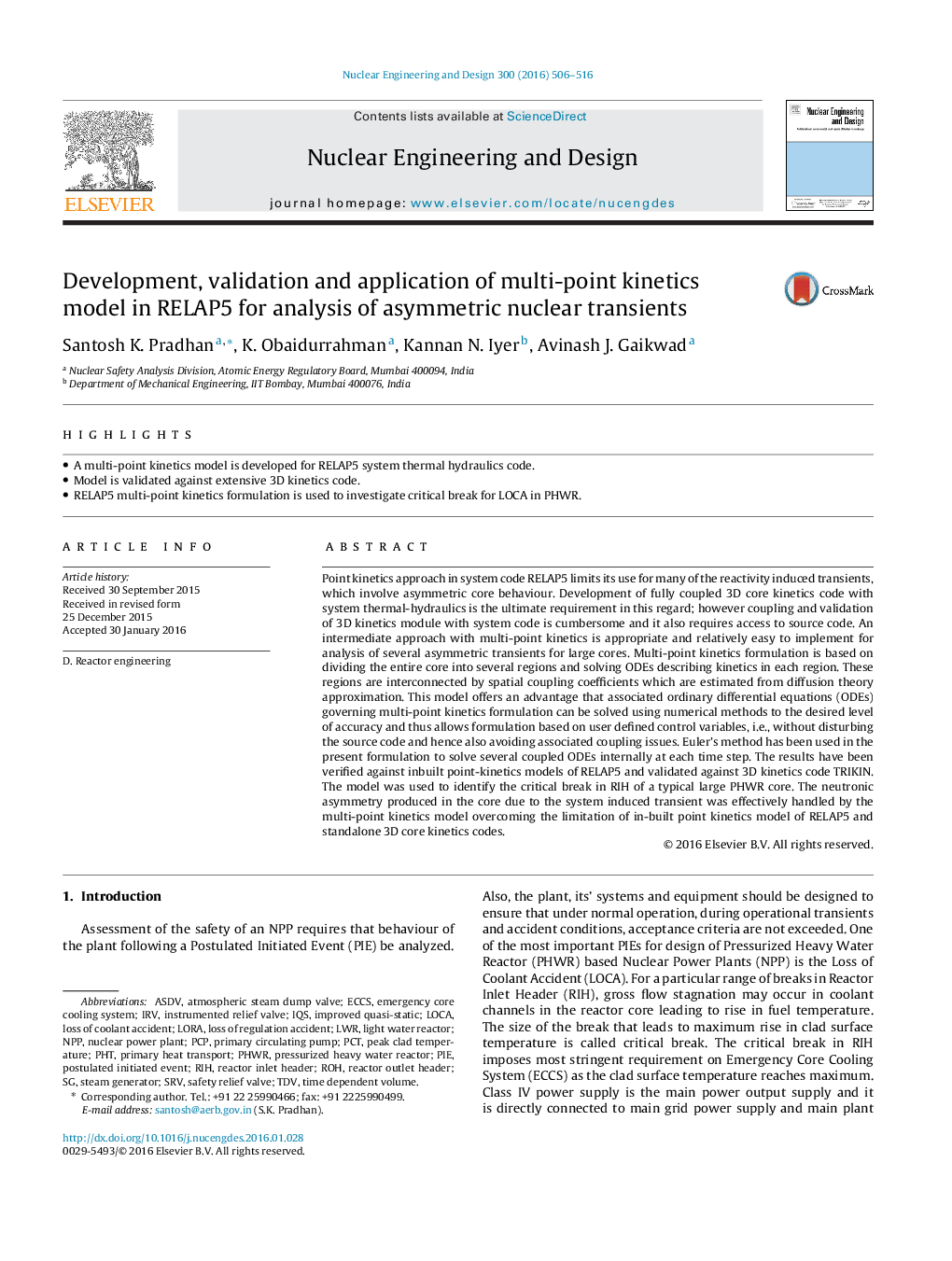| کد مقاله | کد نشریه | سال انتشار | مقاله انگلیسی | نسخه تمام متن |
|---|---|---|---|---|
| 6760050 | 511694 | 2016 | 11 صفحه PDF | دانلود رایگان |
عنوان انگلیسی مقاله ISI
Development, validation and application of multi-point kinetics model in RELAP5 for analysis of asymmetric nuclear transients
دانلود مقاله + سفارش ترجمه
دانلود مقاله ISI انگلیسی
رایگان برای ایرانیان
کلمات کلیدی
LoRaTDVIQSPHWRPCPSRVIRVECCSPCTPHTNPPLWRLocaD. Reactor Engineering - D. مهندسی راکتورROH - ابدیLoss of coolant accident - از دست دادن تصادف خنک کنندهSafety relief valve - دریچه تخلیه ایمنیLight water reactor - رآکتور آب سبکPressurized heavy water reactor - رآکتور آب سنگین تحت فشارEmergency Core Cooling System - سیستم خنک کننده هسته اورژانسnuclear power plant - نیروگاه هستهایPie - پایSteam generator - ژنراتور بخار
موضوعات مرتبط
مهندسی و علوم پایه
مهندسی انرژی
مهندسی انرژی و فناوری های برق
پیش نمایش صفحه اول مقاله

چکیده انگلیسی
Point kinetics approach in system code RELAP5 limits its use for many of the reactivity induced transients, which involve asymmetric core behaviour. Development of fully coupled 3D core kinetics code with system thermal-hydraulics is the ultimate requirement in this regard; however coupling and validation of 3D kinetics module with system code is cumbersome and it also requires access to source code. An intermediate approach with multi-point kinetics is appropriate and relatively easy to implement for analysis of several asymmetric transients for large cores. Multi-point kinetics formulation is based on dividing the entire core into several regions and solving ODEs describing kinetics in each region. These regions are interconnected by spatial coupling coefficients which are estimated from diffusion theory approximation. This model offers an advantage that associated ordinary differential equations (ODEs) governing multi-point kinetics formulation can be solved using numerical methods to the desired level of accuracy and thus allows formulation based on user defined control variables, i.e., without disturbing the source code and hence also avoiding associated coupling issues. Euler's method has been used in the present formulation to solve several coupled ODEs internally at each time step. The results have been verified against inbuilt point-kinetics models of RELAP5 and validated against 3D kinetics code TRIKIN. The model was used to identify the critical break in RIH of a typical large PHWR core. The neutronic asymmetry produced in the core due to the system induced transient was effectively handled by the multi-point kinetics model overcoming the limitation of in-built point kinetics model of RELAP5 and standalone 3D core kinetics codes.
ناشر
Database: Elsevier - ScienceDirect (ساینس دایرکت)
Journal: Nuclear Engineering and Design - Volume 300, 15 April 2016, Pages 506-516
Journal: Nuclear Engineering and Design - Volume 300, 15 April 2016, Pages 506-516
نویسندگان
Santosh K. Pradhan, K. Obaidurrahman, Kannan N. Iyer, Avinash J. Gaikwad,